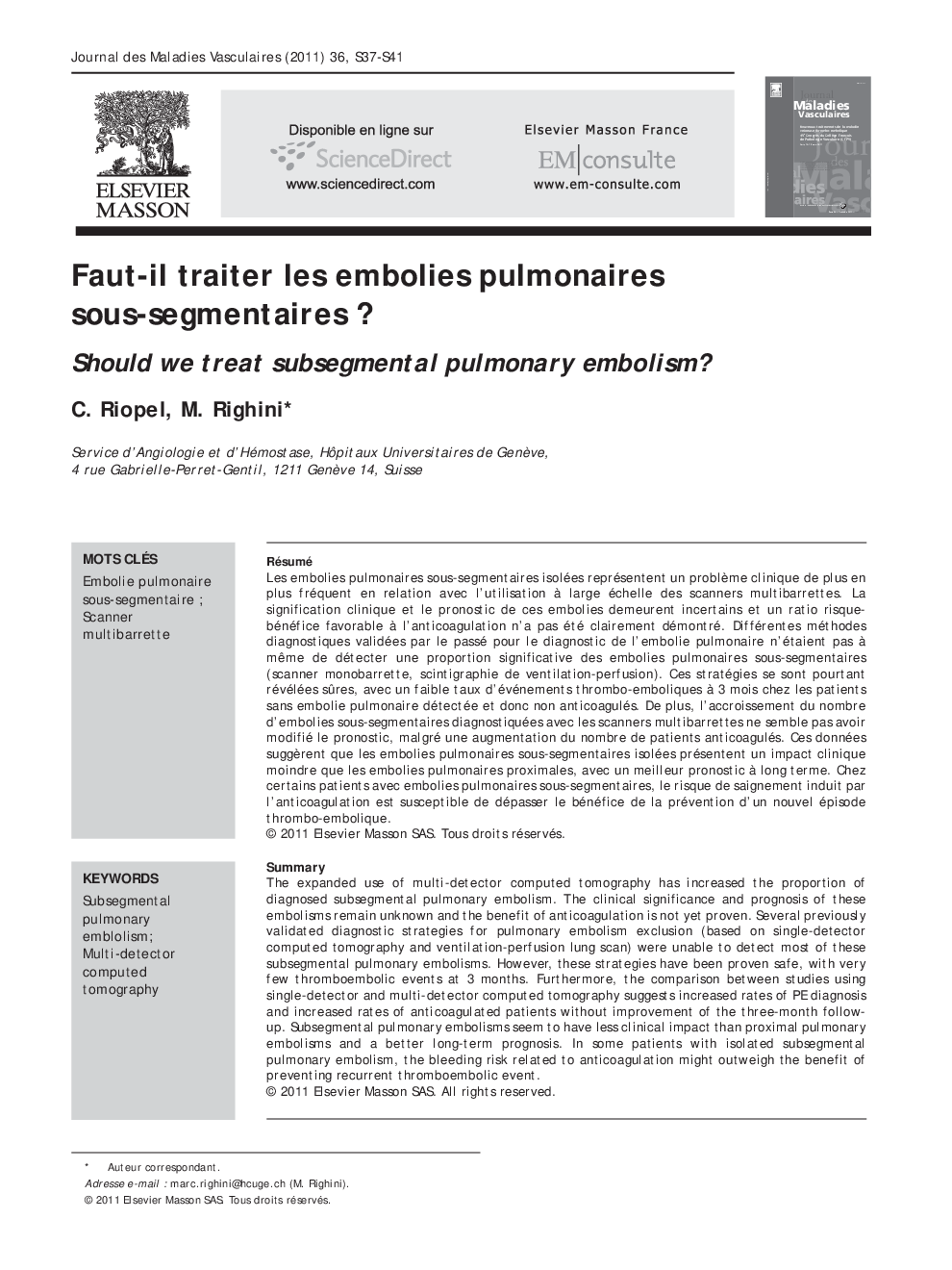| Article ID | Journal | Published Year | Pages | File Type |
|---|---|---|---|---|
| 2975423 | Journal des Maladies Vasculaires | 2011 | 5 Pages |
Abstract
The expanded use of multi-detector computed tomography has increased the proportion of diagnosed subsegmental pulmonary embolism. The clinical significance and prognosis of these embolisms remain unknown and the benefit of anticoagulation is not yet proven. Several previously validated diagnostic strategies for pulmonary embolism exclusion (based on single-detector computed tomography and ventilation-perfusion lung scan) were unable to detect most of these subsegmental pulmonary embolisms. However, these strategies have been proven safe, with very few thromboembolic events at 3 months. Furthermore, the comparison between studies using single-detector and multi-detector computed tomography suggests increased rates of PE diagnosis and increased rates of anticoagulated patients without improvement of the three-month followup. Subsegmental pulmonary embolisms seem to have less clinical impact than proximal pulmonary embolisms and a better long-term prognosis. In some patients with isolated subsegmental pulmonary embolism, the bleeding risk related to anticoagulation might outweigh the benefit of preventing recurrent thromboembolic event.
Keywords
Related Topics
Health Sciences
Medicine and Dentistry
Cardiology and Cardiovascular Medicine
Authors
C. Riopel, M. Righini,
